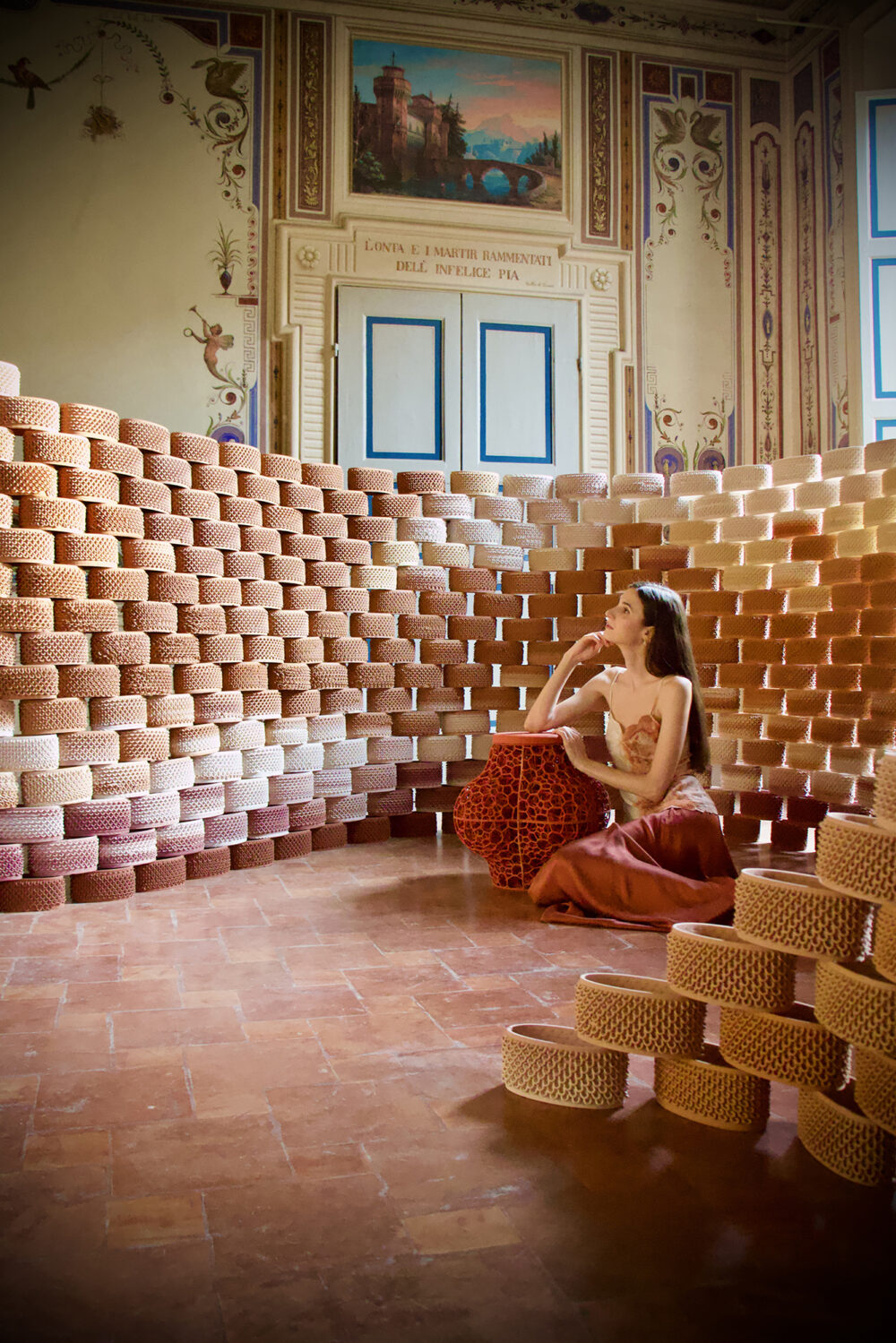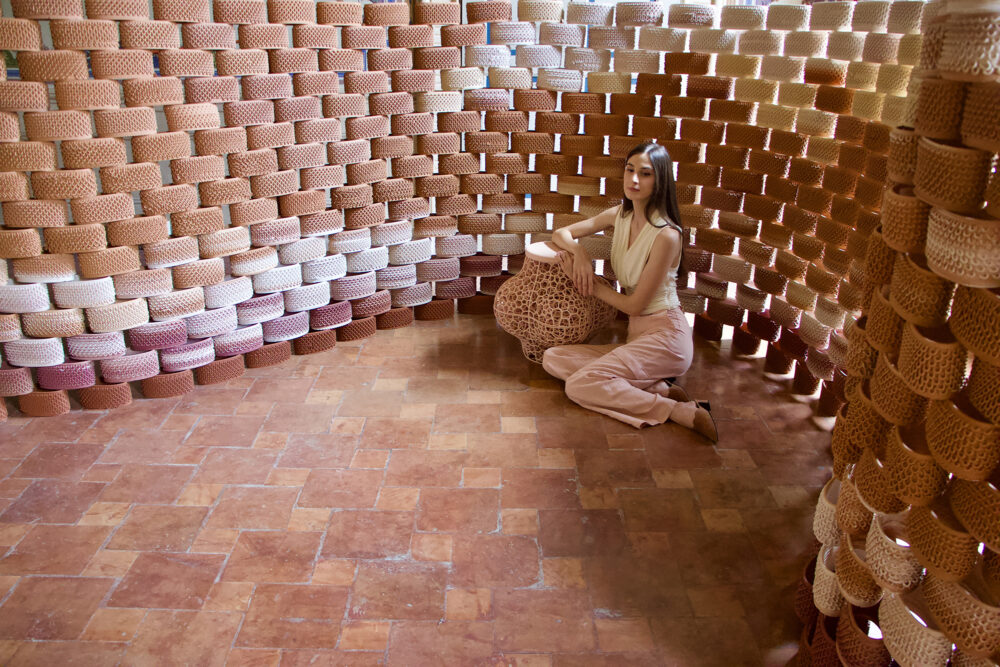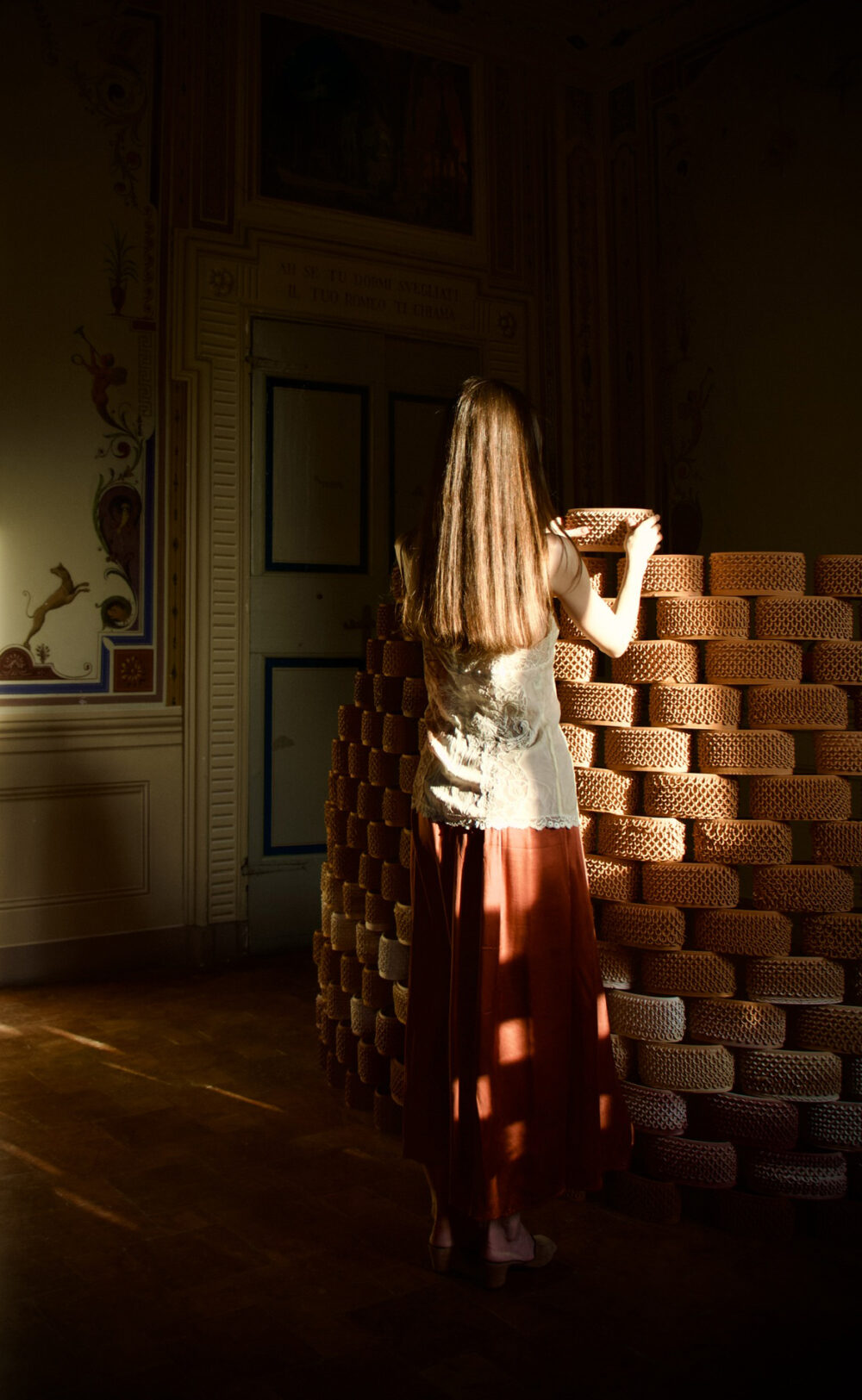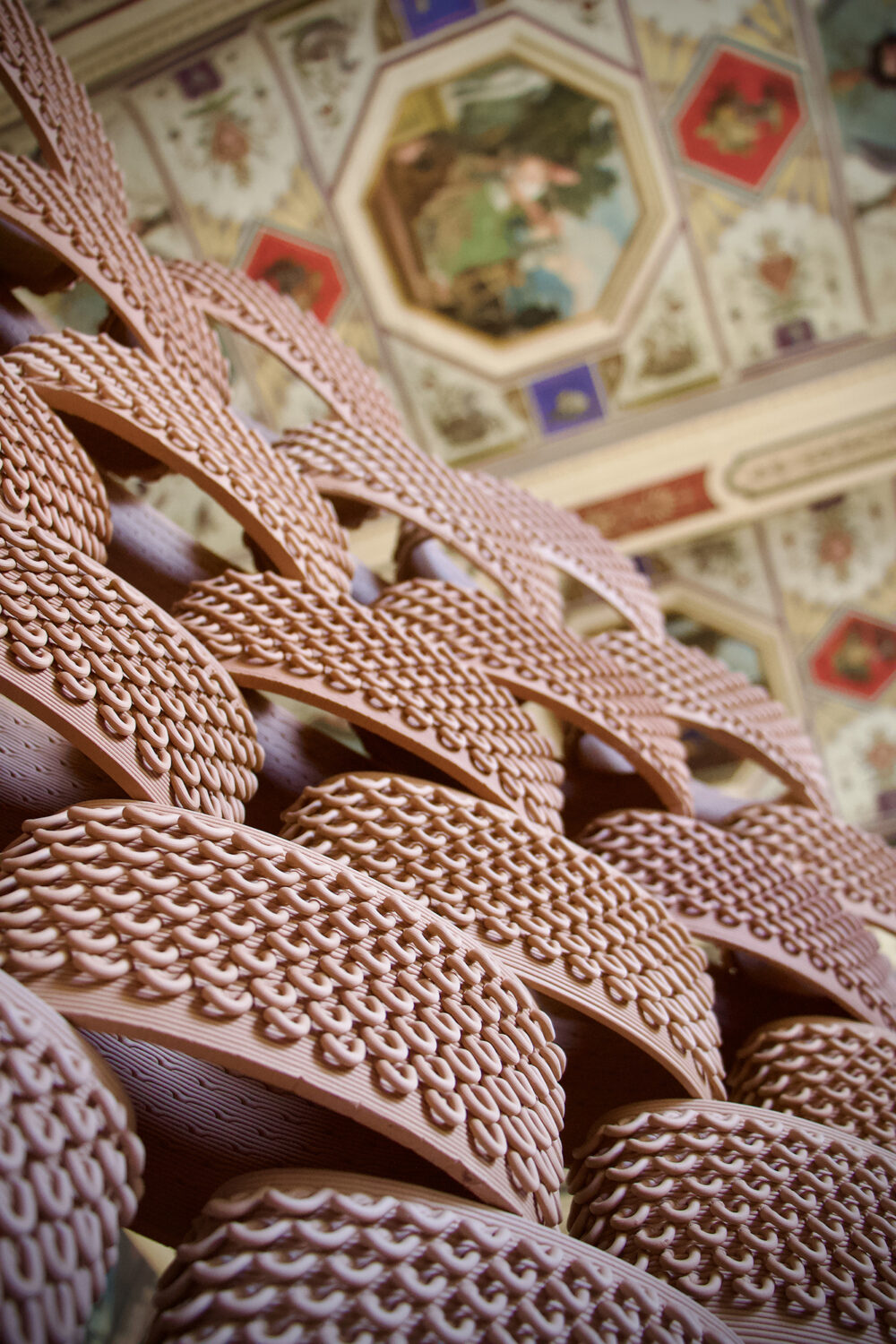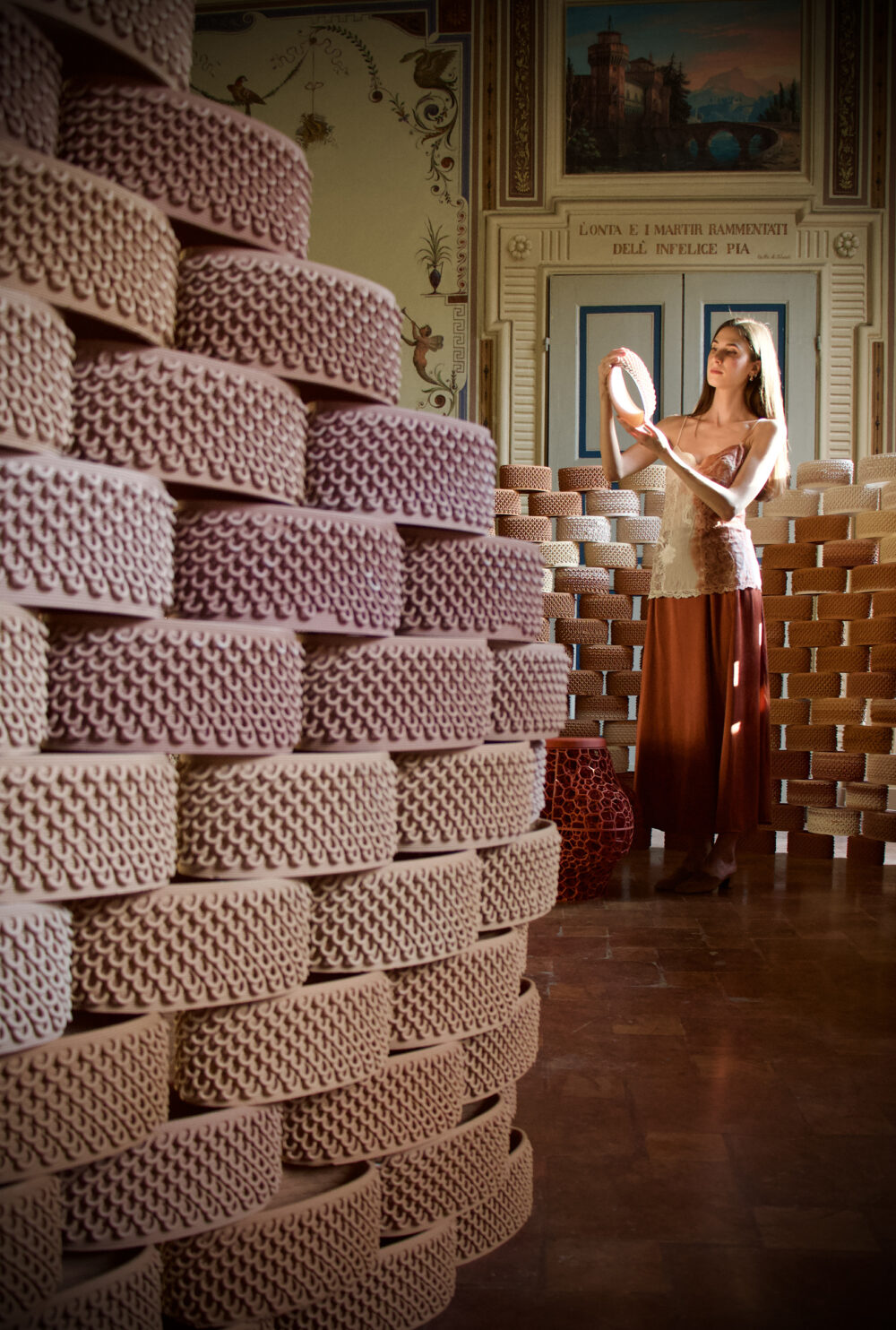It takes an average of 39 years for a new technology to become normalized. 3D printing ceramics was invented in 2010, so by this measure, we will see 3D-printed ceramic objects, interiors, and buildings as commonplace by 2049.
The Future Archeologies Project takes place in Faenza, Italy, a town rich in clay deposits, pottery, and brick traditions. In this project, new 3D-printed bricks are installed in a historic frescoed interior from the 1800s. The 3D-printed bricks are arranged into walls and while they are new and cutting edge, they are also curiously at home here, in harmony with the existing masonry architecture, painted ceiling and walls, and the centuries-old architectural elements, but also strangely foreign with their new shape and texture. This new 3D-printed brick assembly is a kind of future archeology or ruin, already a part of something historic but new at the same time.
This installation looks both back, at traditional building materials, and forward to new and emerging technologies that blend to create a vision for the future.
To create the bricks, we used Potterware, a software application created by my company Emerging Objects, that allows users to very quickly design ceramic objects for 3D printing. The software uniquely generates richly textured surfaces using waves and loops. For this project, I am creating highly textured somewhat feminine bricks, with a textile or basket-like surface, that can be stacked to create sculptural and artistic walls and columns made of the fired local clay. Each brick is engineered and designed to be very simple and strong and printed very quickly. This project takes advantage of local materials, easy-to-use software, and efficiencies in printing and stacking to create beautiful, sinuous, and otherwise seemingly complex surfaces and architectural assemblies.
The exhibition was part of @argilla.italia and was located in Faenza, Italy, and was supported by the Faenza Center for Ceramic Art and WASP3D.
Project Date: 2024
Project Location: Faenza, Italy
Project Team: Virginia San Fratello, Marta Potenza, Frederica Cinque, Mira Principe, Leela Sirdar
Special thanks to the Faenza Center for Ceramic Art, San Jose State University,Quazar Co-working, WASP3D, and Mirco Denicolo for supporting this work.
